The theatre holds an important place in Italy’s culture and history. This has led to the Italian Minister of Culture declaring October 22nd Giornata del Teatro (Day of Theatre) in Italy. On this day, the public has the opportunity to re-discover the value of the theatre by way of free access, tours and performances at Italy’s major theatres/opera houses. Here is a list of 5 historical theatres/opera houses in Rome to explore on Giornata del Teatro:
1. Teatro Argentina

(cc: atravelintime.worpress.com)
Located at Largo di Torre Argentina, this 18th century opera house is one of the oldest in the city. The theatre was designed by Italian architect Girolamo Theodoli after being commissioned by the Sforza Cesarini family. Teatro Argentina officially opened in 1732 and has since been regarded as an architectual jewel ever since. In addition to its beauty, the opera house has also cultivated a great deal of historic importance over the years. For example, a variety of notable premieres have taken place here including Rossini’s Barber of Seville in 1816. The location of the theatre itself is also incredibly interesting as it is the same square where the Curia of Pompey stood in ancient times – also known as the site where Julius Cesar was assasinated during the Ides of March in 44 BC.
Where: Largo di Torre Argentina, 52
2. Teatro dell’Opera di Roma

(cc: @operaincasa)
Teatro dell’Opera di Roma was originally opened in 1880 with a seating capacity of over 2,200. Famous for it’s lavish decor/design, the opera house was commissioned by Domenico Costanzi and designed by Milanese architect Achille Sfondrini. The theatre has held a prominent position in Rome’s cultural circles as it was the host of 46 premiere performances from 1880 to 1926. Although renovations have limited its orginal seating to about 1,600, the theatre is still regarded as a cornerstone of opera culture in Rome as performances continue today.
Where: Piazza Beniamino Gigli, 1
3. Teatro Quirino

(cc: teatroquirino.it)
Teatro Quirino was built in 1871 and is located in the heart of the historic centre. It was commissioned by Prince Maffeo Sciarra who was inspired to name it after Rome’s origins – Quirinale Hill (one of the seven hills of Rome) and the mythological god Quirinus. The theatre has been tranformed over the years by various renovations, however it remains a hub for theatric arts in Rome today.
Where: Via Delle Vergini,7
4. Teatro Sistina

(cc: ilsistina.it)
Teatro Sistina was officially inaugurated in 1949 as a cinema-theatre and was designed by Italian architect Marcello Piacentini. Although Sistina is much younger than the other theatres/opera houses on this list, it has become one of the most important theatres in Italy. The theatre was made famous by the works of Italian playwrights Garinei and Giovannini. It has also hosted many prominent artists, comedians and musicals over the years.
Where: Via Sistina, 129
5. Teatro Valle

(cc:italymagazine.com)
Teatro Valle was built by Italian architect Tommaso Morelli in 1726 after the Capranica family commissioned it for private use. Although the theatre has been renovated many times since its opening, it was originally designed as a classical Italian theatre – a wooden horseshoe shaped structure with 5 tiers of viewing boxes and a gallery. Teatro Valle has been home to many notable premieres over the centuries such as works by Italian composer Gioachino Rossini. The theatre has also become an important symbol of artistic independence in Rome since it was occupied by a group of protestors in 2011 who were arguing against the theatre’s possible privatization.
Where: Via del Teatro Valle, 21


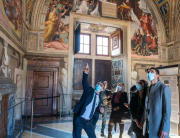
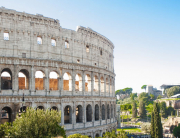
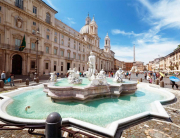
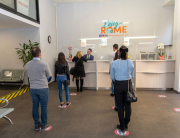
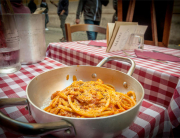
Recent Comments